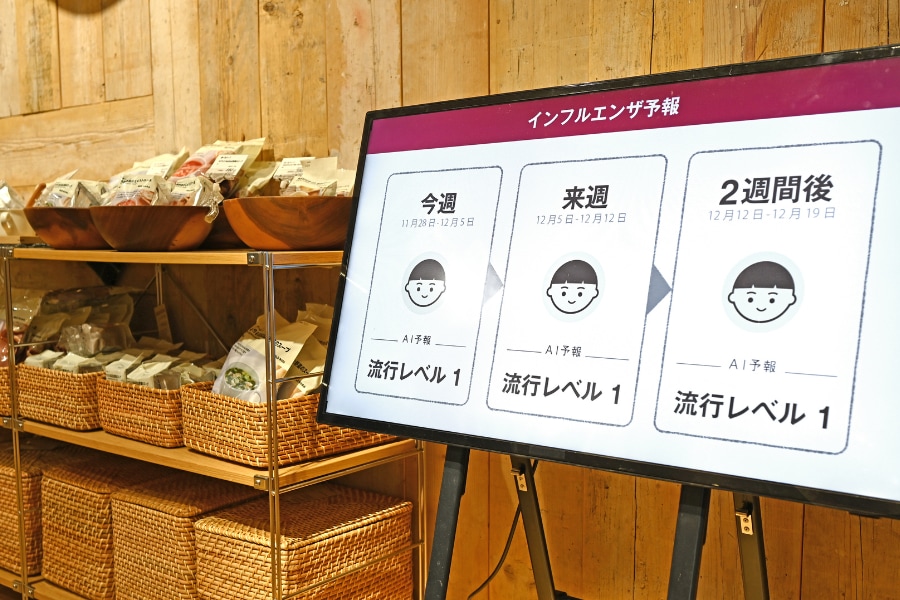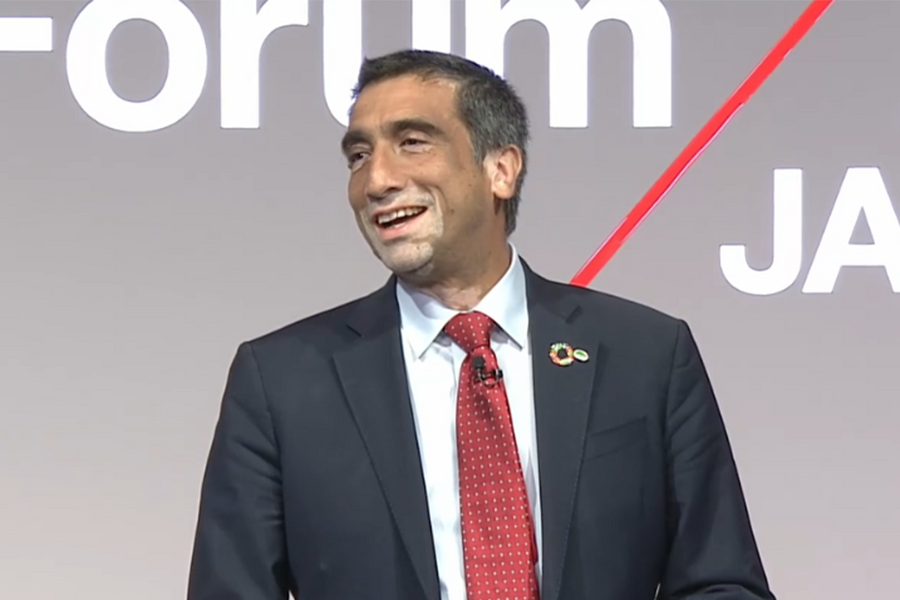Kashiwa-no-ha Smart City Project: Achieving Advanced Urban Development by Leveraging Data
Mar. 29, 2023
Rumi Tomiya

The values of cities, homes, and offices have been ever changing in recent years. In this context, how will urban development change and how can the internet of things (IoT) and digital transformation (DX) contribute to improving the quality of people's lives?
Discussions on such themes were held at the end of October 2022 at Hitachi Social Innovation Forum 2022 JAPAN—the Hitachi Group's largest event—where Kazunori Yamashita (Managing Officer at Mitsui Fudosan Co., Ltd.), Professor Tomonari Yashiro of the University of Tokyo, and Shinya Mitsudomi (Vice President and Executive Officer at Hitachi, Ltd.) spoke about the example of Kashiwa-no-ha Smart City.
Innovation: Not driven by a single genius
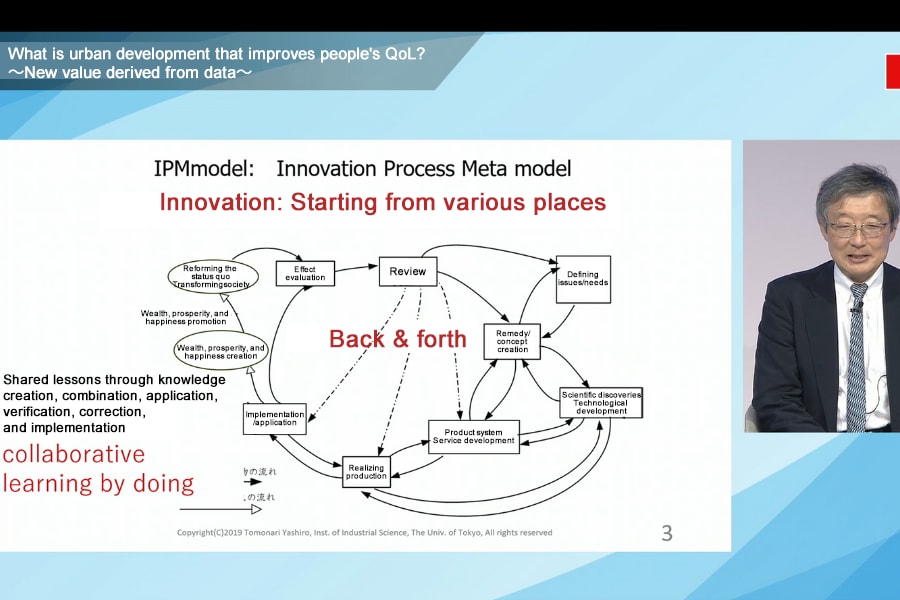
First, Professor Yashiro introduced the concept of the "innovation process meta model" in terms of how innovation should occur in the development of smart cities, stating that "innovation starts from various places and evolves through a process of learning while going back and forth between various processes."
"Innovation is not driven by a single genius but rather through the participation of a diverse number of players, each with varying degrees of involvement. When many players participate, there will always be background noise. However, in order to innovate, it is necessary to go back and forth between various processes," remarked Professor Yashiro.
The Kashiwa-no-ha Smart City Project is cited as an example of "distributed and coordinated innovation," which began in the early 2000s in Kashiwa City, Chiba Prefecture, led by Mitsui Fudosan, and Hitachi subsequently became involved.
In addition to some of Japan's top universities and research institutions having outposts in the area, including the University of Tokyo, Chiba University, and the National Cancer Center, Kashiwanoha-campus Station was also opened in 2005 to coincide with the opening of the Tsukuba Express train service, attracting a great deal of attention.
Three progressive initiatives
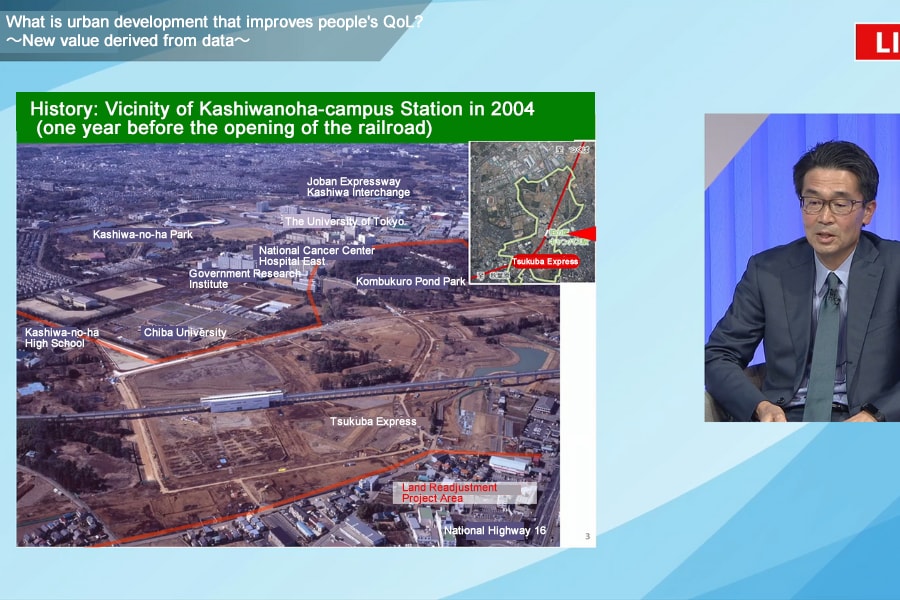
Mr. Yamashita, who is a Managing Officer at Mitsui Fudosan, which is promoting urban development in Kashiwa-no-ha, describes the features of this area as follows:
“Surrounded by academia, such as the University of Tokyo, we saw the potential for advanced urban development and decided to pursue our smart city initiative in this area. As a result, we were able to create a branded city that is not just residential but that is also highly integrated with the functions of various buildings, including offices, commercial facilities, and hotels.”
In 2008, the vision for an urban development called the "Kashiwa-no-ha International Campus Town Initiative” was formulated. The three themes set forth were "environmental symbiosis," "health and longevity," and "creation of new industries," and the following progressive initiatives are being tackled:
- (1) Environmental symbiosis: Introducing a smart grid to achieve electricity flexibility in the urban area; this will achieve a 26% reduction in peak power consumption during normal times as well as ensure that there are no power outages even in the event of a disaster.
- (2) Health and longevity: Aiming to create a town where people can be healthy simply by living there, "ASHITA," a town health station, was established. The approximately 3,000 members of this station can receive lifestyle advice based on health data that is collected via IoT.
- (3) Creation of new industries: The Kashiwa-no-ha Open Innovation Lab was established to support the exchange of human capital and information, to develop a system that facilitates the creation of ventures, and to promote innovation by providing expert advice.
Leveraging residents' data to create new services
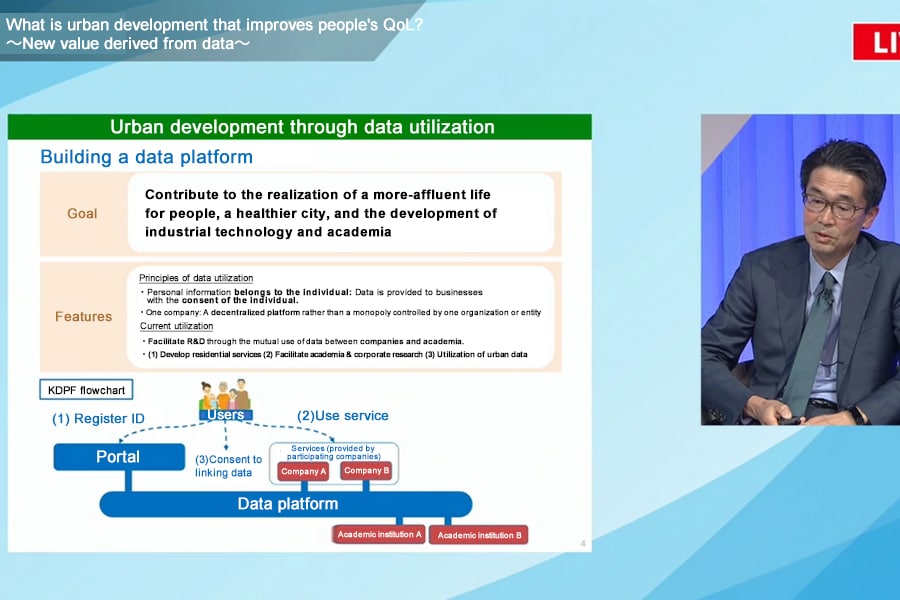
Kashiwa-no-ha Smart City entered a new phase in 2019, and the building of data platforms and other facilities is the current focus.
The data platform, which went live in November 2020, allows businesses to use a variety of data from residents, companies, academia, and others, with their consent, to create innovation.
“For example, when data held by the National Cancer Center or the University of Tokyo is provided to a company, it requires a high level of security, but it is a system that promotes research and development and that generates innovation. Additionally, when multiple companies collaborate to utilize data, it is possible to create new services,” said Mr. Yamashita.
Importance of integrating data
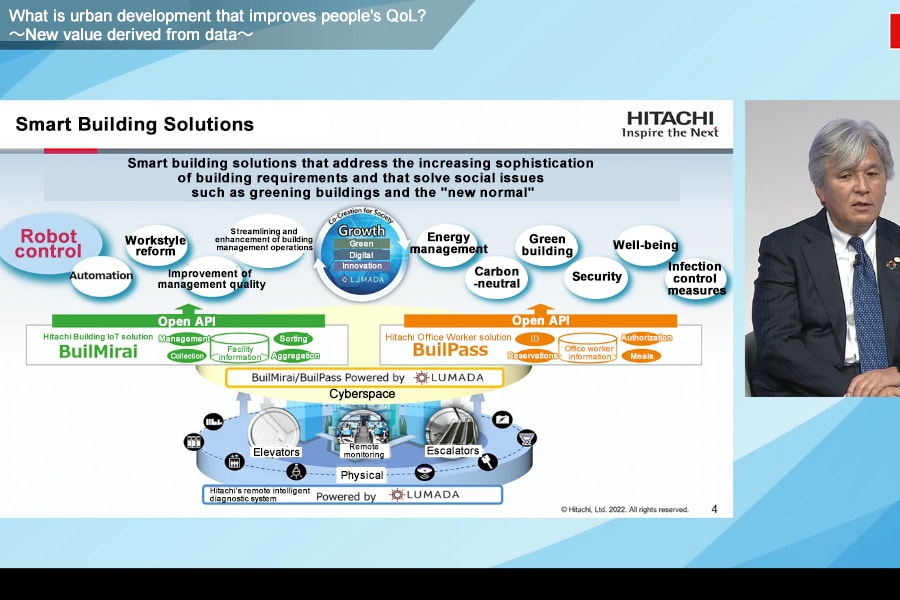
In smart cities and buildings, where data is used in a complex manner by a variety of services, such as in Kashiwa-no-ha Smart City, which is an urban development project involving a variety of players and the participation of residents, it is important to have a platform that can efficiently collect, manage, analyze, and utilize a wide variety of data.
This is where Hitachi building IoT solution is expected to be vital. Once up and running, it will be possible to collect, integrate, and use data from a building that until now has been managed individually, enabling the efficient management of buildings and saving energy by using building elevator operation data, air conditioning usage data, weather forecast data, and other data.
Furthermore, Hitachi office worker solution, allows users to make reservations for building facilities and to order and pay for food and beverages from restaurants in the vicinity of the building all via a single app. This is expected to contribute to making offices and other areas in buildings more comfortable.
Mitsudomi, who lead’s Hitachi's building systems business, expressed his enthusiasm for the future as follows:
“I would like to make a world in which individual users can use this kind of system to receive the services that are right for them. As a local integrator supporting the creation of building innovations, I would like to take on the challenge of how to make data valuable for people and how to contribute to platform creation."

